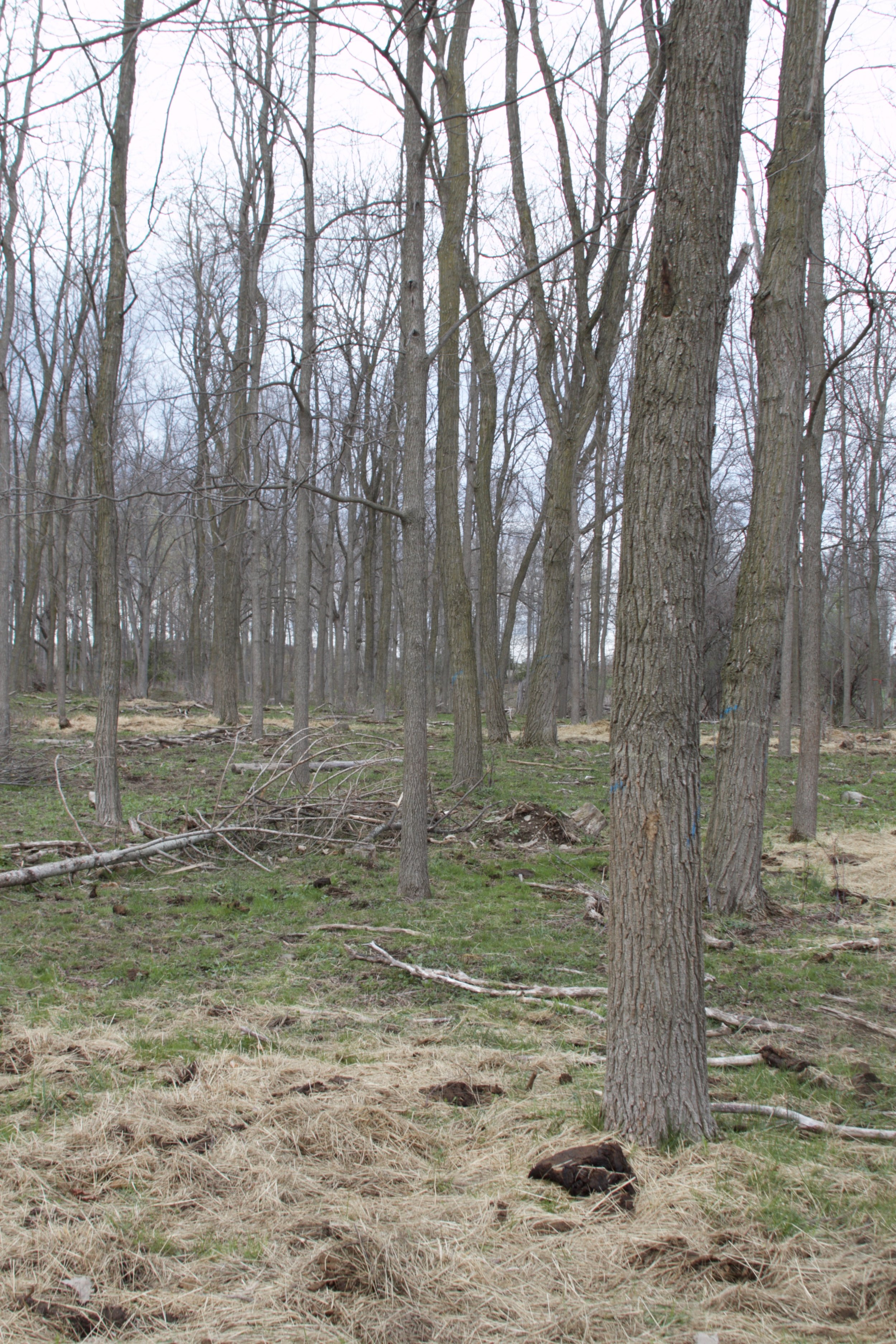Growing Black Locust Fenceposts
If we’re going to have animals, we need fences. Grass-fed beef and dairy are hot right now, both in the media, and outside in the July sun. Holistically-managed cattle operations produce protein while drawing down carbon — and fencing is an integral part of the equation. Perimeter fencing is often the largest fixed cost when starting a cattle operation, or simply when leasing a new field. Graziers don’t want their cattle to escape, given that loose animals waste valuable farm time, create a danger to cars, and can interact with neighboring animals, potentially contracting disease. Single-strand electric fence is a godsend to graziers for paddock subdivisions, but deer will often rip it down, and thus it doesn’t work for perimeter fence.
Black locust is the best tree for fenceposts. Black locust, Robinia pseudoacacia is a fast-growing rot-resistant hardwood, native to large swaths of North America. Fenceposts are the most common use of the the tree, and locust lumber is a substitute for teak, mahogany, apitong, and other tropical hardwoods. Locust posts will last 3-4x as long as pressure treated posts.
Fencing is expensive. Growing black locust fenceposts presents a spectacular opportunity to offset costs. Depending on regional cost, high-tensile fence can run north of $6 per linear foot, landing us at a minimum of $50,000 to fence a 100-acre field. Growing the 433 posts needed to fence that field can be done on 1-2 acres, depending on spacing, with installation costs ranging from $2500-5500 per acre, depending on spacing and soil prep. After 8 years, a fencepost harvest will offset fence costs of roughly $7000, and harvesting those posts ourselves requires little to no specialized equipment. Anyone that ran run a chainsaw can harvest locust posts.
For the financially inclined, growing locust for posts yields a 7-12% internal rate of return, dependent on soil, genetics, and management. Overyield, our agroforestry planning software, helps a land manager navigate installation costs, management, and harvest, as well as the time value of money. The bottom line is that if you grow more fenceposts that you need, you can recover a significant portion of the upfront costs in a single harvest.
Graze the cattle beneath the trees. Silvopasture is the intentional integration of trees, forage, and livestock – and it often looks like cattle grazing underneath widely-spaced tree plantations. If we let more light in through the tree canopy, the grass keeps growing. Researchers at the University of Kentucky found that beef cattle with access to tree shade on hot days gained 60% more weight than cattle in the open sun. If we plan to grow a cattle operation into neighboring fields, planting black locust is a great investment: 2 acres of black locust silvopasture can fence 100 acres of pasture, and shade the cattle in the meantime. Keys to success are good tree genetics and planning ahead.
Some black locust are better than others. We can either plant black locust seedlings, or improved clones. Turbo Obelisk black locust grow about twice as fast as seedlings, and are twice as straight. “Shipmast” locust is a term that refers to trees that exhibit a pinnate (straight) growth form, of which the Obelisk is an elite selection. No one wants to pound curved fenceposts. Ordering trees by September, to plant in April, is ideal if we’re looking for Turbo Obelisk, but Thanksgiving is a good cutoff for lower-quality conservation-grade seedlings.
Fencing not only pays the taxes, it keeps land in agriculture. For landowners that don’t actively farm, installing perimeter fence is the key to working with a good grazier, both in terms of finances and relationships. Livestock integration is a key pillar of regenerative agriculture, according to both Rodale and Kiss The Ground. Though it may seem counterintuitive given the emissions associated with confinement livestock operations, if we’d like a farm to be net-positive from a climate perspective, we likely need livestock out on pasture to cycle carbon and foster biodiversity.
Key Points:
Fences keep our cattle in, and keep the neighbor’s cattle and feral hogs out
Black locust is the best tree for fenceposts, and it’s native to the U.S.
Fences are expensive, but we can grow the posts ourselves
2 acres of black locust can yield 100 acres of fenceposts, at an IRR of 8-12%
Graze cattle beneath the trees on hot days, i.e. practice silvopasture
Plant good locust genetics, such as Turbo Obelisk
If you want regenerative agriculture on your land, you need fences
Further Reading:




















